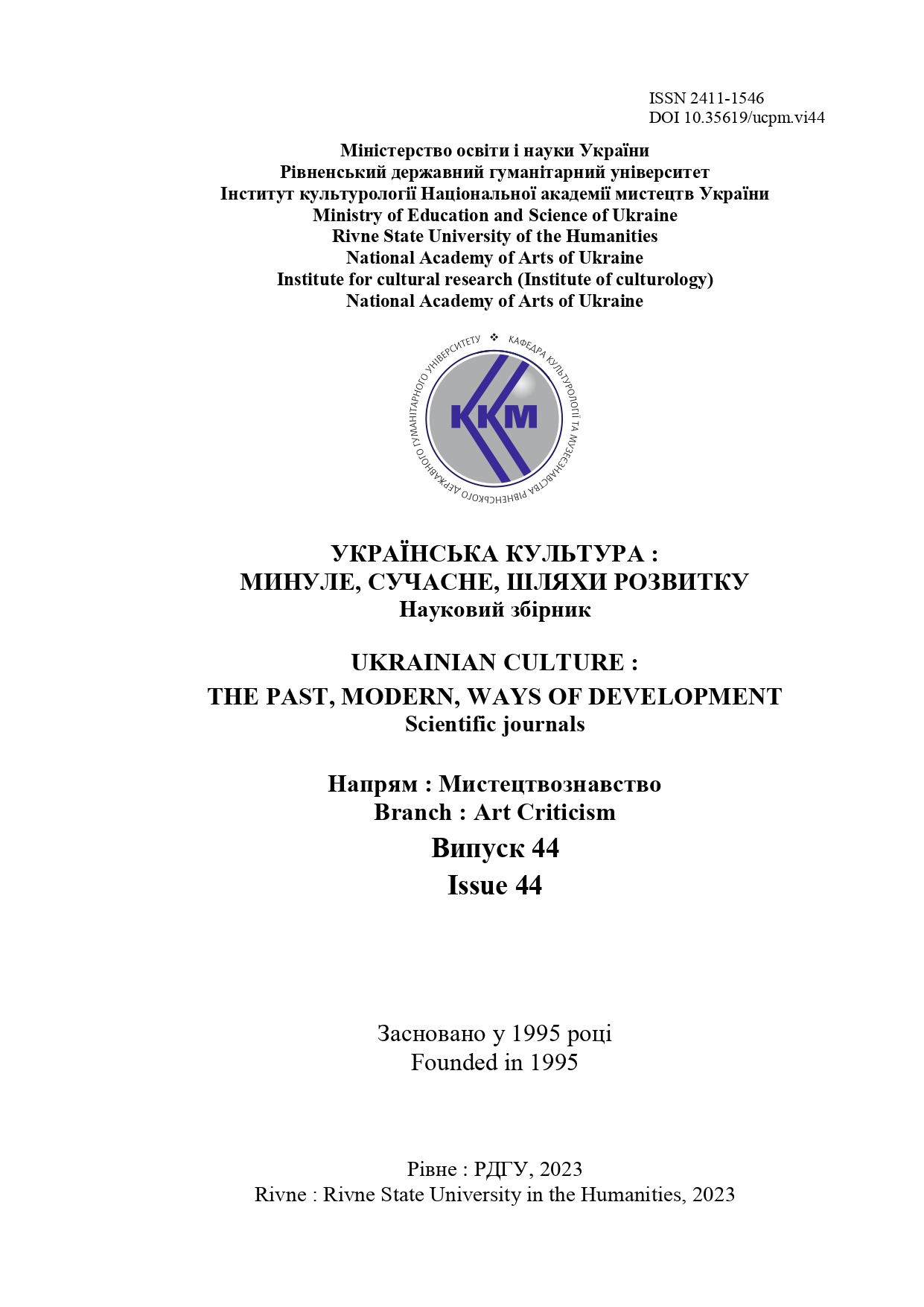CHORAL BALLAD «ZEMGALE» BY PETERIS VASKS: MUSICAL UNDERSTANDING OF THE HISTORICAL PAST
Abstract
Peteris Vasks is a central figure in the contemporary Latvian music scene; his works are performed by many worldrenowned ensembles, and there are numerous concert and studio recordings. Another important factor in the study's focus on the composer's choral music is that the author himself singles out the sound of the a cappella choral array as one of his
favorite timbral solutions, as he announced at a creative meeting in Kyiv in September 2019. In addition, Peteris Vasks has been turning to choral music from the very first years of his composing activity and continues to do so today; today the catalog of the artist's choral works includes more than 30 works of various genres. In this context, choral ballads of the mature period are to some extent a generalization of the composer's creative search. Therefore, the first scientific approach to the analysis of the ballad «Zemgale» determines the novelty of the study.
The main objective of the publication is to determine the artistic means of reflecting historical events in the music of the choral ballad «Zemgale» by Peteris Vasks.
The methodology includes methods of structural-functional and historical analysis to: trace the characteristic features of the ballad genre at different stages of development and identify individual features of its embodiment in the choral works of Peteris Vasks; establish the constructive features of the organization of the musical tissue and ways of its correspondence with the textual basis of the piece.
Conclusions. In the choral music of Peteris Vasks, during different stages, stable individualized sound models were formed, which correlate with a certain imagery and become a kind of translators of the inherent meanings.
The first model is turned to the past, associated with the medieval and Renaissance religious tradition, the core of which is the harmonic modes, the ancient church modes. The sequential presentation of a modus by a single voice creates a horizontal movement in the time coordinate. The second important coordinate that regulates the development of a sound
model is the synchronization of all the sounds of the fret-sound series vertically.
The densest sound formation formed in such synchronization is a cluster, which can take on various textural forms: sonorous stream, sonorous band, etc. The second model of sound tissue organization has an almost identical mechanism. It is also based on the modal idea, but it is completely different: the modes of artificial nature are symmetrical modes of limited
transposition or the so-called octatonic modes.
The third model is the measurement of sonorous sonorities. The largest proportions of this model can be traced in extremely tragic works: it is a stream of external noises that amplify the sonorous resources of the sound fabric. In the foreground are shouts, whistles, speaking, grotesque laughter, glissandos to extremely high and extremely low sounds that embody clots of emotions of a huge tragic range.
Thus, comprehending the past of his homeland, the composer chooses dramatic moments of history. On the example of the choral ballad «Zemgale», the author's approach to the poetic source is traced: the undulating fluctuations of acute empathic states, outbursts of strong emotional empathy achieved by using a wide palette of techniques and techniques are revealed.


